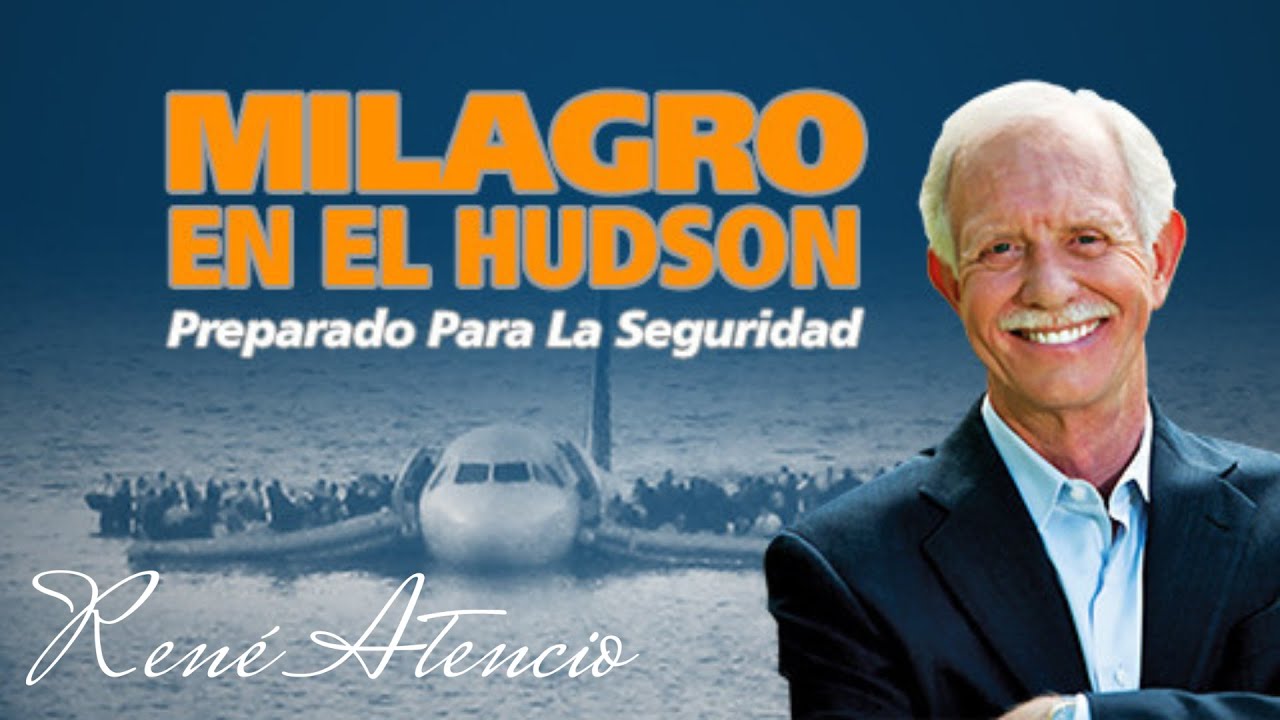Captain Sully's Minute-by-Minute Description of The Miracle On The Hudson | Inc.
Summary
TLDROn January 15, 2009, Captain Chesley 'Sully' Sullenberger faced the 'Miracle on the Hudson,' when US Airways Flight 1549 struck a flock of geese, causing both engines to fail. With exceptional skill and calm under immense pressure, Sullenberger made a daring water landing in the Hudson River, ensuring the survival of all 155 passengers and crew. The transcript recounts the harrowing experience, the captain's quick decisions, and the successful evacuation, highlighting the importance of teamwork and training in the face of an unprecedented crisis.
Takeaways
- 🕊️ The flight encountered an unexpected bird strike, causing both engines to fail.
- 🎥 The pilot's experience and calm under pressure were crucial in handling the emergency.
- 🚁 The initial response involved turning on the engine ignition and auxiliary power unit to try and recover engine function.
- 🛫 The pilot quickly ruled out the possibility of returning to the airport due to the lack of engine thrust.
- 🌉 The Hudson River was chosen as the best possible place for an emergency landing given the circumstances.
- 🤝 The First Officer, Jeff Skiles, collaborated seamlessly with the pilot, enhancing the decision-making process.
- 🗣️ The pilot's PA announcement was carefully chosen to convey confidence and prepare passengers for impact.
- 🛑 The use of aviation-specific vocabulary like 'brace' was essential for clear and concise communication during the crisis.
- 🛳️ The pilot's knowledge of the area facilitated a successful water landing and subsequent rescue by nearby ferries.
- 👶 The evacuation was swift and orderly, with special attention given to vulnerable passengers like the elderly and infants.
- ⏱️ It took four hours to confirm that all passengers and crew were safe, marking the end of the pilot's immediate responsibilities.
Q & A
What was the initial condition of Flight 1549 on January 15, 2009?
-Flight 1549 started as a completely routine and unremarkable flight for the first 100 seconds.
How did the speaker describe the encounter with the birds?
-The speaker described the encounter as sudden and shocking, with a large flock of Canada Geese filling the wind screen, causing significant damage to the engines.
What was the impact of the birds on the jet engines?
-The birds caused incredibly damaging and disruptive effects on the finely balanced machinery of the jet engines, which were spinning at tens of thousands of revolutions per minute.
What was the immediate physical response of the speaker to the engine failure?
-The speaker's immediate physical response included a spike in pulse and blood pressure, and experiencing tunnel vision due to stress.
What were the speaker's first three conscious thoughts after the engine failure?
-The speaker's first three thoughts were disbelief that it was happening, a realization that it wouldn't happen to him given his experience, and acceptance that this flight would likely not end on a runway with the aircraft undamaged.
How did the lack of training for water landings affect the speaker's approach to handling the situation?
-Despite the lack of training for water landings, the speaker's deep knowledge of his craft and the aircraft allowed him to set clear priorities and focus on the highest priority items.
What did the speaker do immediately after realizing the engines had failed?
-The speaker turned on the engine ignition in case the engines could recover and started the airplane's auxiliary power unit.
What were the three options the speaker considered for landing the aircraft?
-The three options considered were two runways that were initially thought to be reachable, and the Hudson River as the only other viable option in the New York metro area.
How did the speaker's experience and knowledge of the New York area help in choosing the Hudson River as the landing site?
-The speaker's familiarity with New York and his experience flying into the area allowed him to quickly assess that the Hudson River was the best possible place for the emergency landing.
What was the role of First Officer Jeff Skiles during the crisis?
-First Officer Jeff Skiles collaborated wordlessly with the speaker, providing support and suggestions, and was ready to intervene if necessary, based on their shared experience and understanding of the situation.
What was the significance of the word 'brace' in the PA announcement made by the speaker?
-The word 'brace' signaled to the cabin crew and passengers that an emergency landing was imminent, prompting them to prepare for impact and follow the flight attendants' commands.
How did the speaker's choice of words in the PA announcement contribute to the successful evacuation?
-The speaker chose specific words to convey a vivid image of what to expect, which helped to align the crew and passengers and ensured a quick and orderly evacuation.
What was the final critical maneuver performed by the speaker and First Officer Jeff Skiles before landing?
-The final critical maneuver was for the speaker to judge visually the height at which to begin raising the nose of the aircraft to achieve the proper attitude for landing on the water.
What was the outcome of the emergency landing on the Hudson River?
-The aircraft landed hard but with uniform deceleration, remained intact, stable, and floating, allowing for a successful evacuation with all passengers and crew accounted for.
Outlines

このセクションは有料ユーザー限定です。 アクセスするには、アップグレードをお願いします。
今すぐアップグレードMindmap

このセクションは有料ユーザー限定です。 アクセスするには、アップグレードをお願いします。
今すぐアップグレードKeywords

このセクションは有料ユーザー限定です。 アクセスするには、アップグレードをお願いします。
今すぐアップグレードHighlights

このセクションは有料ユーザー限定です。 アクセスするには、アップグレードをお願いします。
今すぐアップグレードTranscripts

このセクションは有料ユーザー限定です。 アクセスするには、アップグレードをお願いします。
今すぐアップグレード関連動画をさらに表示

How the Miracle on the Hudson Unfolded

𝐌𝐢𝐥𝐚𝐠𝐫𝐨 𝐞𝐧 𝐞𝐥 𝐇𝐮𝐝𝐬𝐨𝐧: 𝐏𝐫𝐞𝐩𝐚𝐫𝐚𝐝𝐨 𝐩𝐚𝐫𝐚 𝐥𝐚 𝐒𝐞𝐠𝐮𝐫𝐢𝐝𝐚𝐝

Bagaimana sebuah burung kecil bisa menghancurkan pesawat 100.000 kg

1/15/2025: Homelessness in America

Every Unbelievable AIR CRASH Survival Explained in 14 Minutes

The Miami Miracle | The Amazing Story Of Eastern Airlines Flight 855
5.0 / 5 (0 votes)
